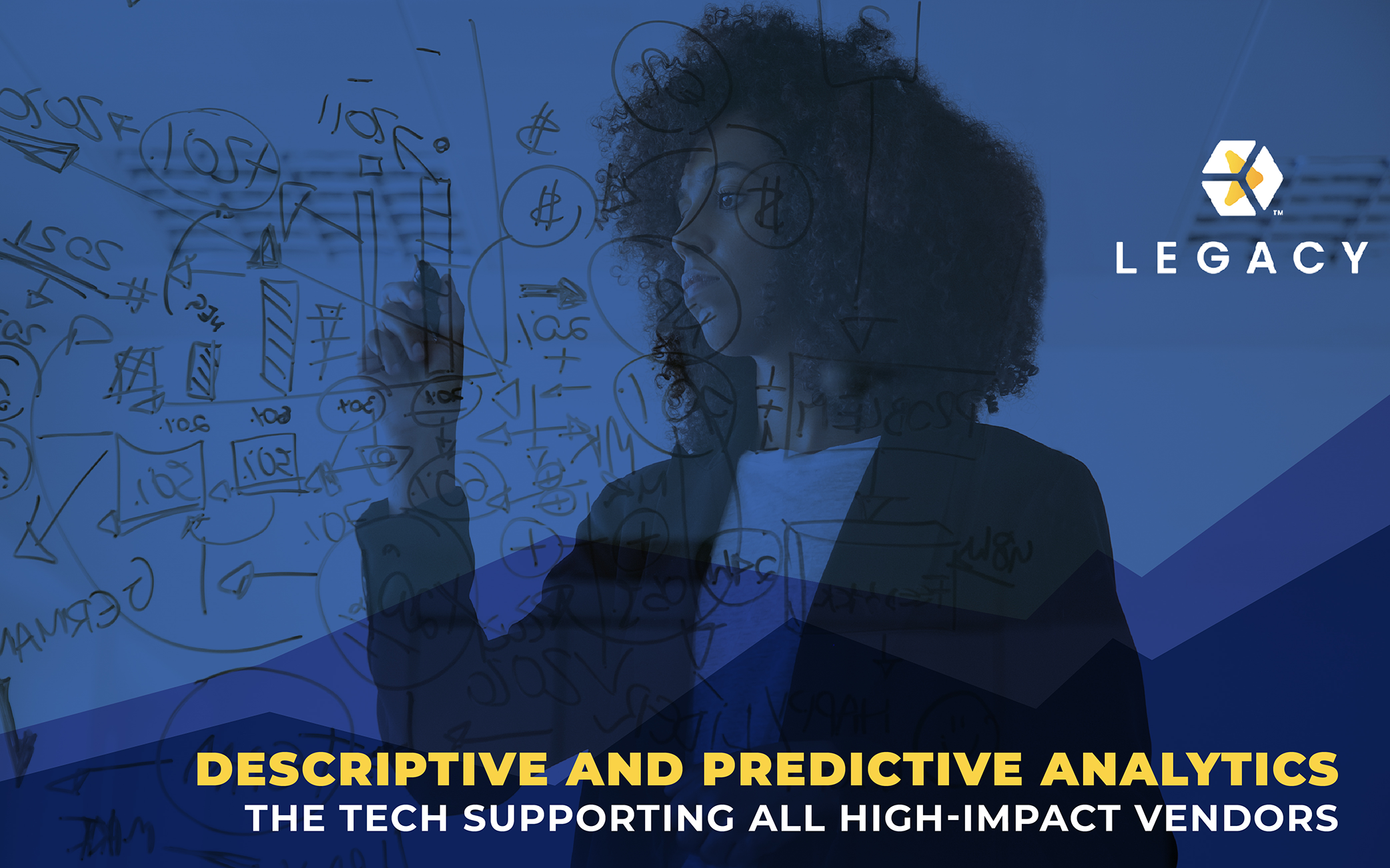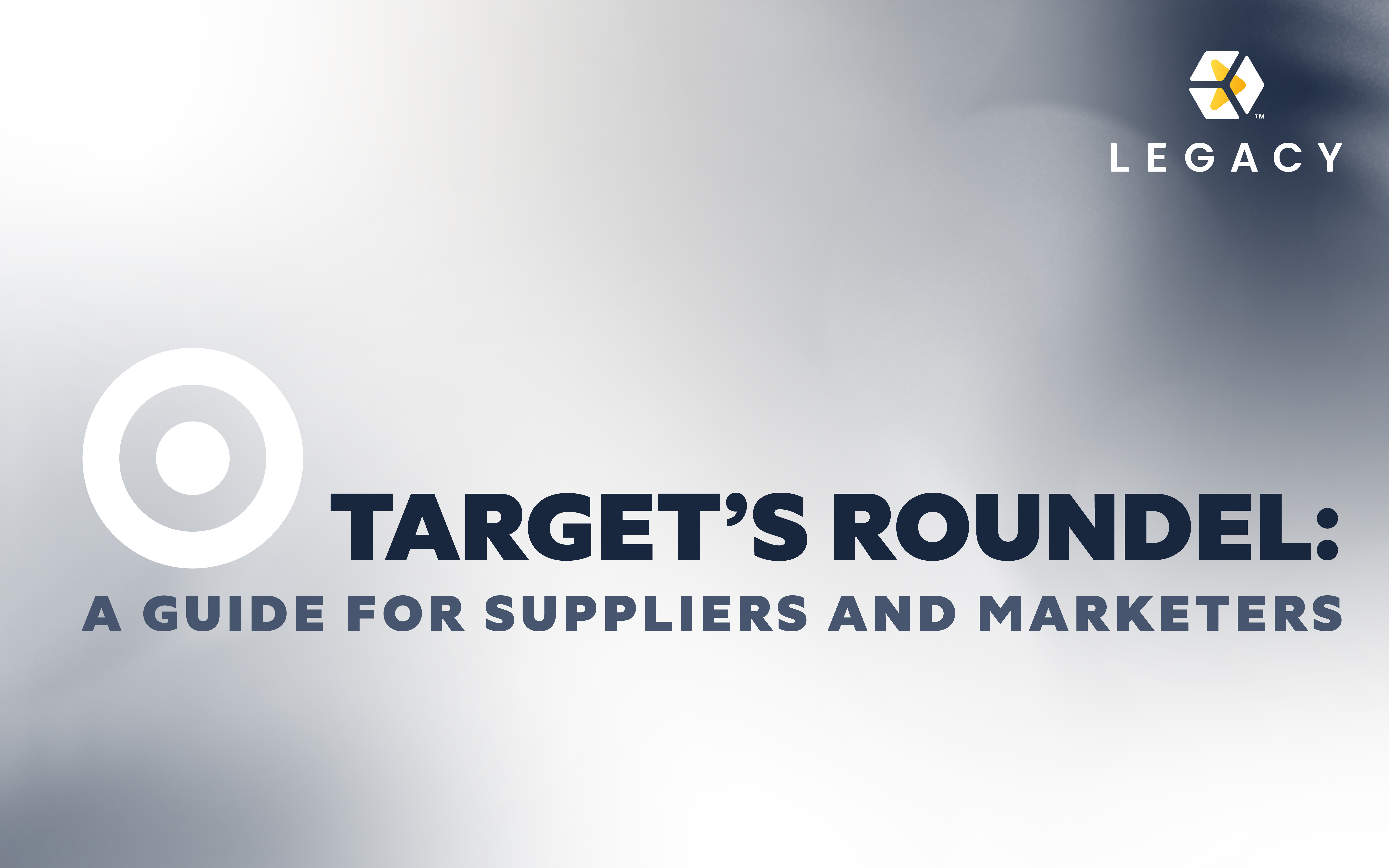At NASA, it’s understood Earth revolves around the sun. At Legacy Retail, it’s understood retail revolves around data. Without adequate data and the technology to process it, a vendor will not earn maximum revenue and will be eclipsed by its competition.
Continue reading to learn about the powerful technologies that give high-impact vendors their competitive edge.
4 Types of Analytics
Data can be processed and presented in 4 ways: 1) descriptive analytics, 2) diagnostic analytics, 3) prescriptive analytics, and 4) predictive analytics. The focus of this article is descriptive and predictive analytics.
Descriptive analytics is historic and well-established. Predictive analytics is groundbreaking and still to be conquered. The past and the future.
Descriptive Analytics
Descriptive analytics are presented as sums and percentages describing what has happened and is happening in your business. It is an insight into the past and present.
Examples: Inventory turnover ratio (ITR), return on ad spend (ROAS), month-over-month (MoM) and year-over-year (YoY) growth or decline of sales numbers, etc.
This data is pulled from point of sale systems (POS), order management systems (OMS), inventory tracking software, manual and computer-aided recon to gain intel about competitor pricing and performance, and other sources.
The strength of descriptive analytics: Current performance can be compared to past performance to objectively gauge success or failure, strengths, and weak points. The weakness of descriptive analytics: The causes of operational issues cannot be diagnosed with these metrics alone.
Predictive Analytics
Like descriptive analytics, predictive analytics are also presented as sums and percentages. However, these metrics can be manipulated to forecast what might happen in the future.
Vendors can see ITR, MoM, YoY, and other metrics as they might be in the near or distant future.
Predictive analytics comes from the fusion of descriptive and diagnostic analytics (analysis of data + analyst hypotheses), processed through computer-aided statistical procedures and algorithms with the capability to forecast outcomes.
Simply put, past data + present data + educated guesses + software that performs advanced mathematics = “knowing the future”.
To distill things further, you must know what happened and why to predict what’s likely ahead.
Proprietary Technology
Legacy Retail has invested significantly in developing software to gather, analyze, and present your business’ data. These technologies will streamline your operations and increase your strategy effectiveness.
The ultimate goal is to decrease costs across your supply chain, increase sales, and enable your venture to keep pace with or outpace its competition.
Legacy Retail’s proprietary technology:
Zeus – This tech swiftly receives and transforms real-time intel into structured data sets. The Legacy team mines this data for valuable, impactful, and actionable insights.
Consumer View – Based on the crowd-sourcing model, this program gives your brand teams and buyers insight into the shopper’s perspective.
StorePull – Informed by data or sales goals, Legacy Retail’s call center targets specific retail locations to engage with department managers to generate incremental sales.
Ready to become a high-impact vendor? To decrease costs across your supply chain, increase sales, and eclipse your competition? Contact Legacy Retail by clicking here.




